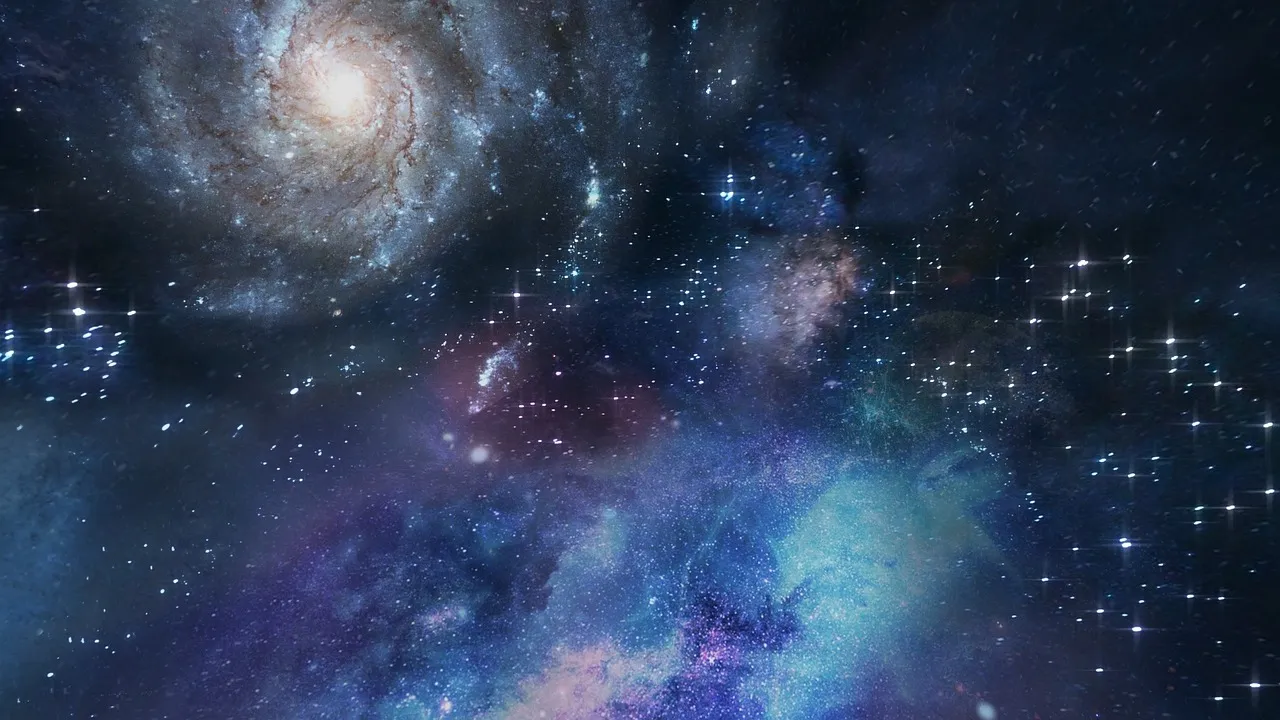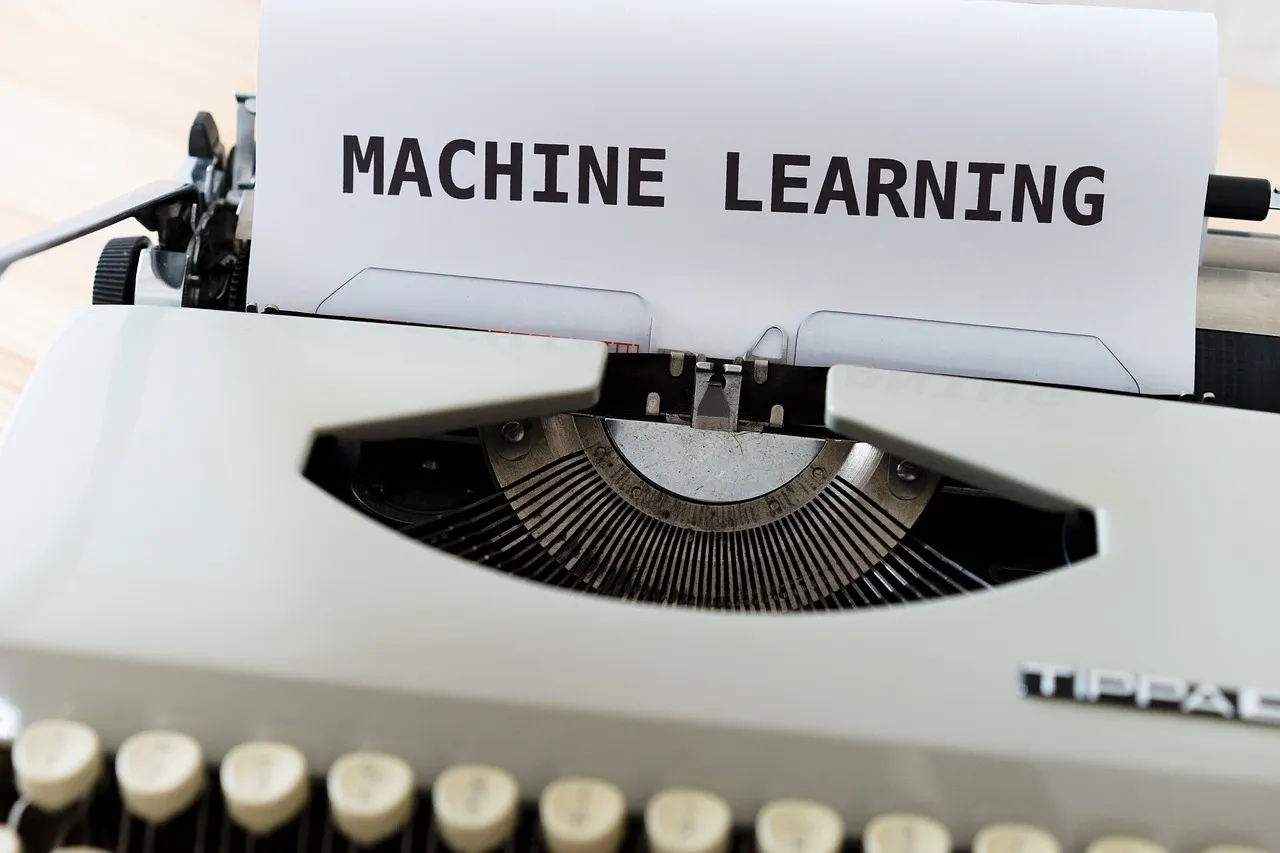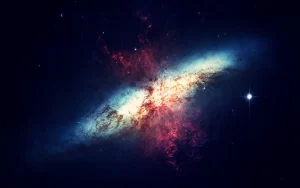Artificial Intelligence (AI) stands as a transformative force at the forefront of revolutionizing the field of astronomy. In this rapidly evolving technological landscape, the infusion of AI techniques marks the dawn of a new era in celestial exploration, offering unprecedented avenues for discovery and profound insights into the mysteries of the cosmos. The dynamic synergy between advanced technology and the expansive realms of space has opened doors to handling astronomical datasets on a scale previously unimaginable.
As technology continues to advance, the integration of AI has become more than a mere asset; it is now a fundamental necessity in navigating the complexities of astronomical data. The sheer volume and intricacies of information collected from the vast reaches of the universe demand a sophisticated approach that goes beyond the capabilities of traditional methodologies. In this context, AI emerges as the key catalyst, enabling astronomers and researchers to sift through enormous datasets and distill valuable knowledge that might otherwise remain elusive.
The evolution of AI within the field of astronomy represents a paradigm shift, promising not only efficiency in data handling but also the potential for groundbreaking discoveries. With the ability to analyze complex patterns, identify celestial objects, and predict astronomical phenomena, AI technologies are reshaping our understanding of the universe. The intersection of artificial intelligence and astronomy is more than a technological trend; it’s a symbiotic relationship that empowers scientists to unravel the secrets hidden in the vast cosmic tapestry.
In the subsequent sections, we will delve into the multifaceted applications of AI in astronomy, exploring how these technologies enhance our capabilities in astrophysics, space exploration, automated data analysis, and the integration of neural networks in astronomical research. By the end, we will also examine the future prospects and challenges lying on the horizon as AI continues to play an integral role in shaping the future of astronomical inquiry. Join us on this journey through the cosmos, where artificial intelligence becomes the guiding light in our quest for knowledge among the stars.
Understanding AI in Astronomy

Within the expansive realm of astronomy, the application of Artificial Intelligence (AI) is a pivotal evolution, characterized by the utilization of sophisticated algorithms to analyze and interpret massive volumes of astronomical data. Unlike traditional methods that are often time-consuming and constrained by their capacity to handle large datasets, AI emerges as a revolutionary force, poised to reshape the landscape of celestial inquiry.
At its core, AI in astronomy involves the deployment of advanced algorithms designed to discern patterns, extract meaningful information, and derive insights from the colossal datasets acquired through telescopes, satellites, and other astronomical instruments. The traditional approach, often manual and labor-intensive, pales in comparison to the efficiency and speed that AI brings to the table. This paradigm shift is particularly evident in projects such as the Large Synoptic Survey Telescope (LSST), where AI acts as a transformative tool in the processing and analysis of vast astronomical datasets.
The Large Synoptic Survey Telescope stands as a testament to the symbiotic relationship between AI and astronomy. With its capability to capture wide-field images of the entire sky, LSST generates an unprecedented amount of data, necessitating a paradigm shift in data processing. Traditional methods, in this context, would be prohibitively slow and resource-intensive. However, by leveraging AI algorithms, LSST can swiftly sift through massive datasets, identify celestial objects, and extract valuable information efficiently.
The significance of AI in astronomy becomes evident when considering the sheer volume of data generated by modern astronomical instruments. Whether observing distant galaxies, studying cosmic phenomena, or monitoring space debris, the ability to process data at an accelerated pace is paramount. AI algorithms excel in handling these tasks, allowing astronomers to focus on the interpretation and scientific implications of the data rather than getting bogged down in manual processing.
As we navigate through the cosmos, the role of AI in astronomy becomes increasingly indispensable, acting as a force multiplier that amplifies our capacity to explore and understand the universe. In the subsequent sections, we will delve into specific applications of AI in astrophysics, space exploration, and data analysis, illustrating how these advanced algorithms propel astronomical research into new frontiers of knowledge. Join us as we unravel the intricacies of AI’s influence on celestial exploration and the profound impact it holds for the future of astronomy.
AI Applications in Astrophysics:
The integration of Artificial Intelligence (AI) into the domain of astrophysics heralds a transformative era, where advanced algorithms wield unparalleled capabilities in unraveling the complexities of the cosmos. The applications of AI extend across a spectrum of astrophysical endeavors, spanning simulations, modeling, and predictive analytics, fundamentally altering the way we comprehend the vastness of space.
In the realm of astrophysics, simulations play a crucial role in understanding celestial phenomena, from the formation of galaxies to the intricate dance of stars within them. AI, with its capacity to analyze and simulate complex systems, enhances our ability to model these astrophysical processes with unprecedented accuracy and efficiency. Researchers can now explore diverse scenarios, simulate cosmic events, and gain insights into the dynamics of the universe in ways that were previously impractical using conventional computational methods.
Machine learning algorithms, a subset of AI, emerge as powerful tools in astrophysics by enabling computers to recognize patterns and extract meaningful information from vast datasets. This capability proves invaluable in deciphering intricate relationships within astronomical data, leading to a more nuanced understanding of celestial objects and their behavior.
One of the most remarkable applications of AI in astrophysics is its role in gravitational wave detection, exemplified by the Laser Interferometer Gravitational-Wave Observatory (LIGO). Gravitational waves, ripples in spacetime caused by cataclysmic events such as the collision of black holes or neutron stars, were predicted by Albert Einstein a century ago but remained elusive until the advent of advanced technologies. LIGO, equipped with highly sensitive detectors, captures minuscule disturbances in spacetime caused by these cosmic events. The sheer volume of data generated by LIGO necessitates advanced algorithms for analysis, and AI steps in as a crucial ally.
AI algorithms deployed in LIGO can sift through immense datasets, identify gravitational wave signals amidst the cosmic noise, and provide prompt alerts for further investigation. This breakthrough has not only confirmed Einstein’s predictions but has opened a new observational window to the universe, allowing scientists to explore phenomena previously inaccessible. The success of AI in gravitational wave astronomy is a testament to its potential in pushing the boundaries of our understanding of the universe.
Machine Learning in Space Exploration
The infusion of machine learning algorithms into space exploration marks a paradigm shift in our approach to navigating the vast and enigmatic cosmos. These advanced algorithms, designed to learn and adapt from data, empower autonomous space probes to make real-time decisions, enhancing the efficiency and adaptability of interstellar missions. Notably, the marriage of machine learning and space exploration has unlocked new frontiers, enabling spacefaring entities like NASA to venture further into the unknown.
Autonomous space probes, equipped with AI-guided systems, represent a leap forward in our ability to explore distant celestial bodies. Traditional space missions relied on pre-programmed commands and intricate sets of instructions, limiting their responsiveness to unforeseen challenges. Machine learning changes this dynamic by imbuing space probes with the ability to learn from their surroundings, analyze data in real-time, and make decisions autonomously. This adaptive capability proves invaluable when navigating through the unpredictable and complex terrains of space.
A stellar example of machine learning’s impact in space exploration is evident in NASA’s Mars rovers. These rovers, such as Curiosity and Perseverance, are tasked with traversing the Martian landscape, conducting experiments, and sending back valuable data to Earth. The Martian terrain presents numerous challenges, including uneven surfaces, unforeseen obstacles, and variable weather conditions. Machine learning algorithms play a pivotal role in enabling these rovers to navigate efficiently and overcome obstacles autonomously.

The rovers utilize a combination of sensors, cameras, and machine learning algorithms to analyze the Martian terrain in real-time. As the rovers encounter obstacles or challenging landscapes, the machine learning algorithms adapt, allowing the rover to adjust its path and continue its mission. This adaptability is crucial for the success of the mission, ensuring that the rovers can respond to the unpredictable nature of the Martian environment.
Moreover, machine learning extends beyond navigation in space exploration. These algorithms are utilized for data analysis, enabling spacecraft to identify scientifically significant features, prioritize observations, and optimize resource utilization. This not only streamlines mission operations but also enhances the scientific yield of space exploration missions.
Automated Data Analysis in Astronomy
In the expansive field of astronomy, one of the most formidable challenges lies in handling vast and complex datasets generated by cutting-edge telescopes and observatories. The sheer volume of data collected from space, whether it be radio signals, optical observations, or other forms of celestial information, necessitates advanced techniques for efficient analysis. This is where Artificial Intelligence (AI), with its prowess in automation and pattern recognition, emerges as a game-changer, revolutionizing the way astronomers unravel the mysteries of the cosmos.
Automated data analysis in astronomy involves the integration of AI algorithms to process, interpret, and extract meaningful insights from the copious amounts of data collected by telescopes and observatories. Traditional manual analysis methods, given the sheer volume of data generated, are impractical and time-consuming. AI, on the other hand, accelerates the analysis process, enabling astronomers to focus on the scientific implications of their findings rather than getting bogged down in the intricacies of data processing.
A shining example of the impact of AI in automated data analysis is evident in projects like the Square Kilometre Array (SKA). This ambitious radio telescope, set to be one of the largest and most sensitive in the world, aims to explore the universe by capturing radio signals from celestial objects. The magnitude of data generated by SKA is staggering, requiring advanced algorithms to sift through the data efficiently.
AI algorithms at the core of SKA’s data analysis pipeline excel in tasks such as signal processing, noise reduction, and pattern recognition. These algorithms can identify subtle signals emanating from distant galaxies or other cosmic phenomena amid the noise of the universe. By automating these intricate processes, SKA maximizes the scientific output, allowing astronomers to uncover hidden insights within the vast sea of data.
Moreover, the automated data analysis facilitated by AI in projects like SKA extends beyond mere efficiency. These algorithms have the ability to detect anomalies, unexpected patterns, and outliers that might escape the human eye. In doing so, AI acts as a valuable tool for serendipitous discovery, revealing celestial phenomena that might not conform to established models or expectations.
Neural Networks in Astronomical Research
Within the intricate tapestry of astronomical research, Neural Networks, a subset of Artificial Intelligence (AI), have emerged as powerful tools capable of unraveling complex patterns and deciphering the enigmatic language of the cosmos. Their ability to recognize intricate relationships within vast datasets has transformed the landscape of celestial object identification and classification, propelling astronomical research into new realms of precision and efficiency.
At the heart of neural networks is their capacity to mimic the human brain’s interconnected web of neurons, allowing them to process information, recognize patterns, and make informed decisions. In the context of astronomy, where datasets are often massive and intricate, the application of neural networks becomes paramount. The ability of these networks to discern subtle patterns within the data contributes significantly to the accurate identification and categorization of celestial objects.
One noteworthy example illustrating the prowess of neural networks in astronomical research is the success of projects like Google’s DeepMind in classifying galaxies. Galaxy classification traditionally relied on manual categorization by astronomers, a time-consuming and subjective process. Neural networks, however, bring a level of automation and objectivity to this task.
DeepMind, renowned for its achievements in machine learning, demonstrated the potential of neural networks in classifying galaxies. The algorithm, trained on vast datasets containing images of galaxies, learned to recognize distinct features indicative of different galaxy types. The neural network’s ability to generalize from the training data enabled it to accurately classify galaxies in unseen datasets, showcasing the efficiency and reliability of this AI-driven approach.
Beyond galaxy classification, neural networks prove valuable in various astronomical tasks, such as identifying exoplanets, mapping cosmic microwave background radiation, and even predicting the occurrence of certain celestial events. The ability to extract intricate features and relationships within datasets allows neural networks to contribute to a more profound understanding of the universe.
As astronomical datasets continue to grow in complexity and size, the role of neural networks becomes increasingly crucial. These AI-driven systems not only streamline the process of data analysis but also enable astronomers to explore uncharted territories in the cosmos. The integration of neural networks in astronomical research represents a harmonious marriage of human ingenuity and artificial intelligence, unlocking new dimensions in our quest to comprehend the mysteries of the universe.
Future Prospects and Challenges
The integration of Artificial Intelligence (AI) into astronomy has undeniably propelled the field into a realm of unprecedented possibilities, offering a tantalizing glimpse into the future of celestial exploration and understanding. As we stand at the intersection of technological innovation and cosmic inquiry, the potential for AI in astronomy appears limitless. However, navigating the path ahead comes with its set of challenges, demanding a delicate balance between pushing the boundaries of knowledge and addressing ethical considerations.
Future Prospects:
Enhanced Scientific Discoveries:
AI promises to revolutionize how we approach astronomical research, leading to more efficient data processing and analysis. Advanced algorithms will likely unveil hidden patterns, relationships, and correlations within astronomical datasets, enabling scientists to make groundbreaking discoveries and gain deeper insights into the workings of the universe.
Automation in Space Missions:
The future holds the prospect of fully autonomous space missions powered by AI. Space probes equipped with intelligent systems could conduct intricate tasks, make decisions in real-time, and adapt to unforeseen challenges, allowing for more ambitious and adaptive exploration endeavours.
Precision in Astronomical Observations:
AI’s ability to enhance data analysis could lead to more precise and targeted astronomical observations. This, in turn, might result in a more thorough understanding of celestial phenomena, enabling astronomers to refine existing models and theories.
Innovative Applications of AI:
The ever-evolving landscape of AI technology may give rise to innovative applications within astronomy, such as the development of new algorithms for predicting cosmic events, optimising telescope configurations, or even generating hypotheses for unexplored areas of research.

Challenges:
Ethical Considerations:
As AI becomes increasingly integrated into astronomical research, ethical considerations come to the forefront. Issues related to data privacy, bias in algorithms, and the potential misuse of AI-generated insights must be carefully addressed to ensure responsible and ethical practices in the pursuit of knowledge.
Robustness of AI Models:
The reliability and robustness of AI models used in astronomy are critical. Ensuring that these models are accurate and resistant to biases is essential to prevent misinformation and maintain the integrity of scientific findings.
Interdisciplinary Collaboration:
The successful integration of AI into astronomy requires collaboration between astronomers, computer scientists, and experts from various other disciplines. Bridging the gap between these fields is crucial to develop AI models that truly cater to the unique challenges posed by astronomical data.
Technological Advancements:
The rapid evolution of AI technology demands ongoing efforts to keep pace with advancements. Astronomers and researchers must continuously adapt to emerging AI techniques and technologies to harness their full potential in understanding the universe.
In navigating the future of AI in astronomy, the scientific community must remain vigilant, addressing challenges while capitalizing on the vast opportunities these technologies offer. Striking a harmonious balance between innovation, ethical considerations, and interdisciplinary collaboration will be key to ensuring that AI continues to be a transformative force, propelling astronomical research into uncharted territories of knowledge.
Conclusion
In summary, the integration of Artificial Intelligence (AI) with astronomy stands as a transformative force, elevating our comprehension of the universe to unprecedented heights. From the streamlined automation of data analysis to the augmentation of space exploration capabilities, AI emerges as a pivotal player in unlocking the profound mysteries enshrouding the cosmos. As technological advancements continue to unfold, the symbiotic relationship between AI and astronomy holds the promise of a future marked by groundbreaking discoveries and a deeper understanding of the celestial wonders that have captivated human curiosity for centuries. The journey into the cosmos, guided by the synergy of human ingenuity and artificial intelligence, invites us to explore new frontiers and unveil the secrets that the universe has intricately woven into its fabric.
#AI #Astronomy #Innovation
#AIinAstronomy #FutureSpaceExploration #CosmicInnovation #AstroTech #CelestialDiscoveries #MachineLearningCosmos #FuturisticSkyGazing #SmartTelescopes #AstronomyRevolution #AIandAstrophysics
